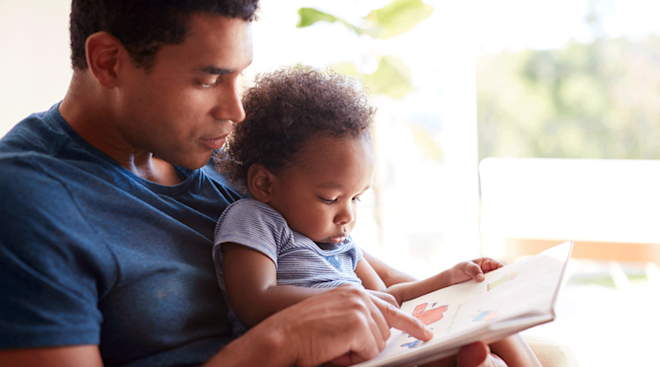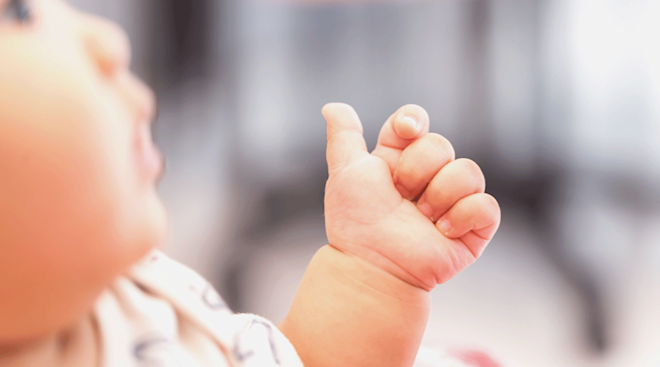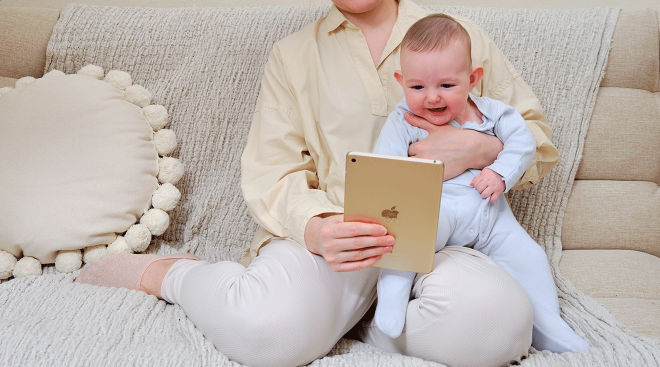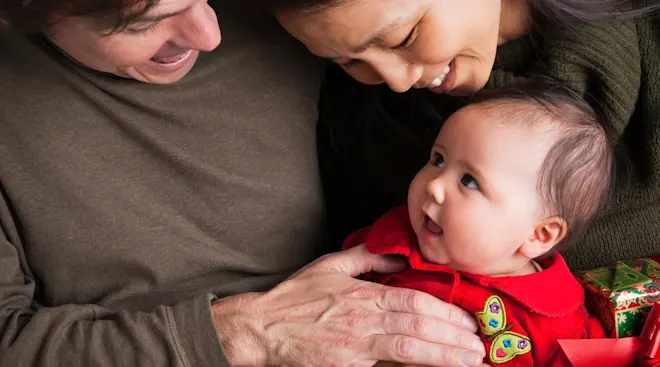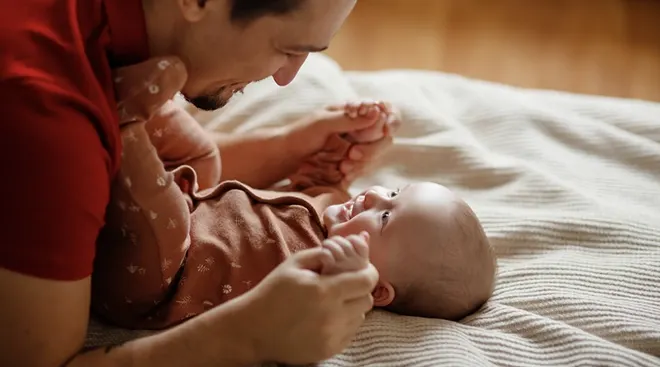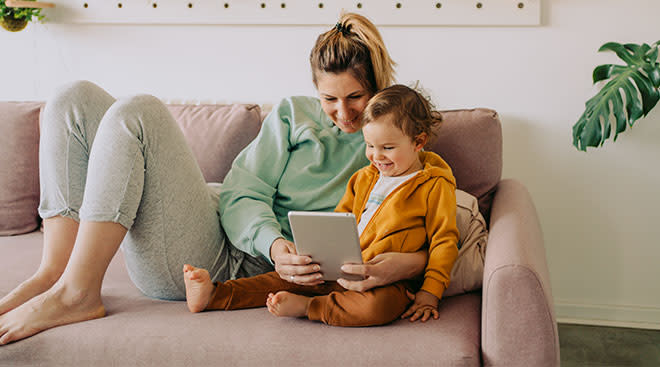Toddler FaceTime Games That Boost Verbal Skills and Family Bonds
At 6 p.m. every night, my phone rings. When I answer, the first question is always, “where’s meow meow two?” It’s my 2-year-old niece BB calling, and for some reason, she is more interested in speaking to my cats than to her very cool aunt.
Since BB was born, I’ve flown to Miami each month to make sure her speech and language skills were up to par. (I’m a speech language pathologist, after all.) When I visited in late February of this year, however, I didn’t know that we’d soon be in the midst of a pandemic, and that we’d need to continue our visits via FaceTime for the foreseeable future. Given my profession, I know how important it is to have frequent interactions with little ones so they remember who you are and build lasting connections with you. I needed a way to continue to build a strong connection with BB.
If you’re a parent or family member of a young child, you know how difficult it is to keep a toddler’s attention over video chat. So I decided to create different games we could play over the phone to keep our connection strong (my brother is still impressed with how long I can get BB to sit still).
When video chatting with young kids, the same basic rules of communication apply as they do for in-person communication: wait for eye contact, engage the child and provide wait time for responses.
The other important thing to remember, especially with virtual communication, is attention. According to the American Academy of Pediatrics, children 8-12 months old have an average attention span of 2 minutes, while a 2-year-old can focus for four to six minutes at a time. So don’t be surprised if a little one wanders away from the screen after two to three minutes—it’s nothing personal.
Wondering how you can effectively engage babies and toddlers via video chat? Below are some great language-boosting activities based on the child’s age and stage.
By 6 months of age, baby’s eyes are fully developed and are able to focus on the world around them. Take advantage of this time before your little one is on the move to participate in sound play and bonding games.
Raspberry trumpets
Raspberries are a great way for babies to practice placing their lips together, turning their voices on and off and varying pitch and volume. It’s also a great way to have a mini-conversation. Facing the screen, start blowing a raspberry. When first starting this activity, I like to do one long and two short, so baby has plenty of opportunities to observe what I’m doing. I then wait three to five seconds for baby to try imitating my movements. Once imitation begins, you can have a back and forth conversation that will keep that little one giggling and engaged, even at a distance.
Peek-a-boo
Another important milestone that happens in the life of a 6-month-old is object permanence, or knowing that when something disappears, it will come right back. We can use technology to our advantage by playing peek-a-boo: Turn the camera in the opposite direction before quickly flipping it back and saying “peek-a-boo!” You can also do a more traditional version of peek-a-boo and simply cover the camera for two seconds, or duck out of the frame, before popping back on screen.
Once a child turns one, a big focus is on building vocabulary, but you’ll need to come up with something interesting to keep their attention for a few minutes.
What’s in the bag?
Toddlers love surprises! In this game, you’ll come to the call with a tote bag filled with three mystery objects. Once you get on the call, you can say, “look at my bag!” Shake the bag to indicate that there are objects inside. Now, dig into the bag and pull something out. Act very surprised and say, “oh look! It’s a cup!” Then take the cup and pretend to drink from it while talking about what you’re doing, like, “I drink water.” You can then do something silly with the cup, such as put it on your head and let it drop off while saying “uh-oh!” Some good ideas for mystery objects are clothing items, kitchen utensils and brushes. When you come to the camera with surprises, your toddler is going to be sure to pay a lot of attention!
Sing-a-long with missing words
Another great way to socialize is by singing together. In our family, we have a lot of songs that have been passed down through generations that we like to sing together, but you can also use more traditional songs like “Twinkle Twinkle” and “Itsy Bitsy.” First, familiarize the child with the song you’re going to sing. It’s great to add in some finger movements as well, to help them “sing along” even before they have their own words. Once you have sung the same song four to five times together (this can be over multiple calls), start leaving a word out, such as, “twinkle, twinkle, little…”. Wait for the child to fill in the blank or provide a hand gesture before continuing on. Continue leaving off the last word of each line and soon you’ll be having a virtual sing-a-long.
At 18 months, children are on the move, so find some games that incorporate movement to keep their attention.
Where is the…
This game is a little bit like a scavenger hunt, so you’ll need to know what is in the room where you’ll be FaceTiming. It may be helpful to get a picture of the room before starting the call (thank you, technology!). Start with something that’s close by and easily seen. Use an excited voice to say “oo! I see a balloon!” Then ask, “do you see the balloon?” I then like to use a sing-song voice to ask, “balloon, where are you?” I use this question so that eventually the child can use the phrase “where are you?” to request the game. Continue playing for as long as you can keep a toddler’s attention, which is usually two to three objects. You can look for objects, pets, specific books or toys that the child may have in the room.
Head and shoulders
By around 18 months, children begin to learn body parts. Rather than quiz them on this new knowledge, start by playing “Head and Shoulders.” Sometimes I’ll put on background music or a video for us to dance around to, but usually I’ll lead the song and we’ll slowly go through each body part (“head…and shoulders…knees….and toes…”). Then, we’ll use each body part, such as “shake your head” and “blink your eyes,” to help build attention for following directions.
By 2 years of age, toddlers are beginning to develop parallel play, or the ability to play side by side with someone. Because the current COVID environment doesn’t allow for that, you can play side by side with the phone as your barrier.
Freeze dance
This is currently our favorite FaceTime activity. After we find the cats, BB asks me to “put on music.” I offer a choice, such as, “do you want Mickey Mouse or Katie Perry?” The first time you play the game, show the toddler what it looks like to freeze. We do a very exaggerated body movement where we puff our cheeks and make fists with our hands to show we’re frozen. Then, start the music. Wait a few moments before pausing and then see if the child stops. If not, you can say, “uh-oh, no music! Freeze!” We can usually get through five rounds of freezing before moving on to the next activity (but we still have never made it to the end of a song).
Guess the picture
This is a great activity for building a child’s creativity. In this game, you hold a sheet of paper and a pencil and quickly draw a simple object. While you’re drawing, you can build the suspense by saying, “oh, I wonder what it is!” Turn the paper around to see if the child can guess the picture. Then say, “your turn!” For younger children, I like to give a few choices, such as, “do you want to draw a dog or a cat?” which gives me a better idea of what I should be guessing. Some great things to draw, even for the non-artist, are ice cream cones, fish, dogs, rabbits or the beach. In addition to building creativity and vocabulary, this is a natural way to build turn-taking skills and fine motor skills. Plus, you will never run out of things to draw.
I’m not sure when I will get to see my sweet baby BB again. It’s been longer than we both expected, but I know that our bond is stronger than ever because of our nightly FaceTime games. I’m grateful, even in these wild times, for the technology that allows me to watch her grow until our next IRL meeting.
Jocelyn M. Wood, MA, CCC-SLP, is a bilingual speech language pathologist with over a decade of experience. She specializes in finding simple and effective ways to boost children’s speech and language skills using everyday routines. Sign up for her free live series to introduce language games to infants and toddlers at speechwithjwo.jocelynmwood.com or visit her on Instagram @speechwithjwo.
Please note: The Bump and the materials and information it contains are not intended to, and do not constitute, medical or other health advice or diagnosis and should not be used as such. You should always consult with a qualified physician or health professional about your specific circumstances.
Navigate forward to interact with the calendar and select a date. Press the question mark key to get the keyboard shortcuts for changing dates.






































